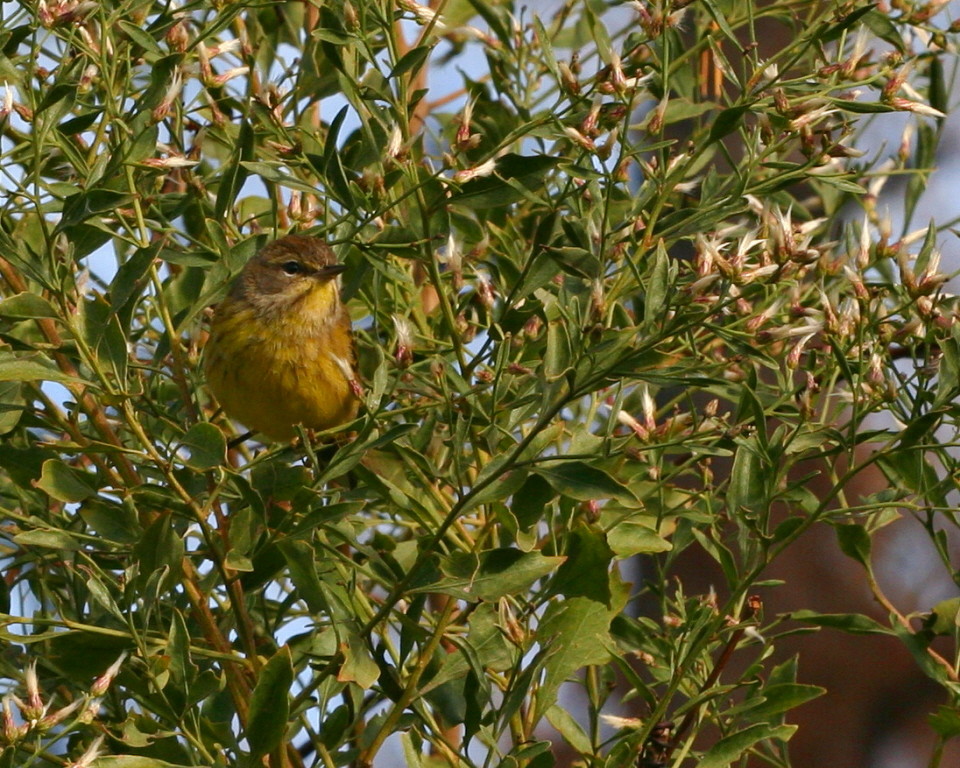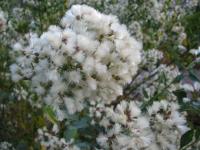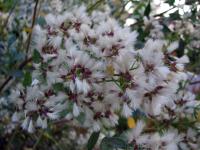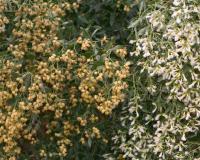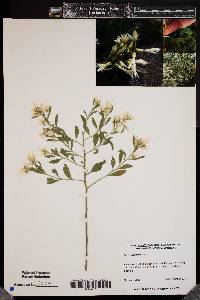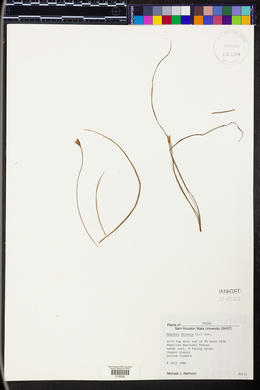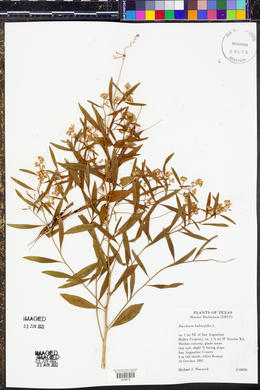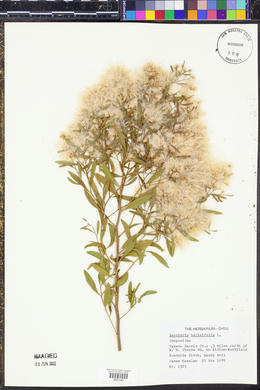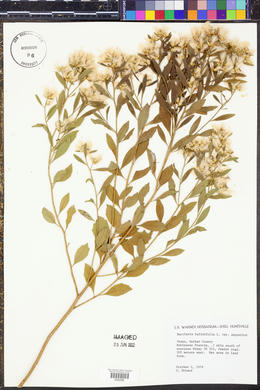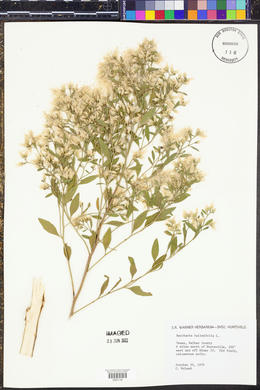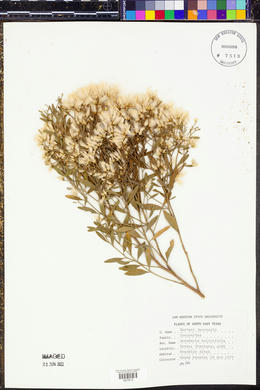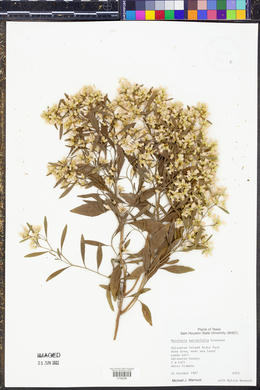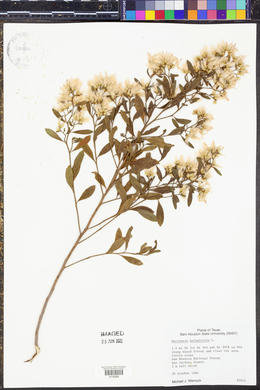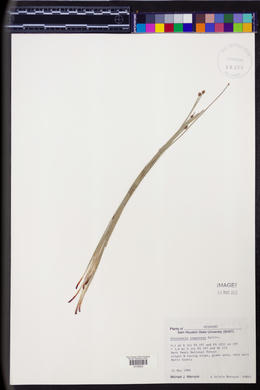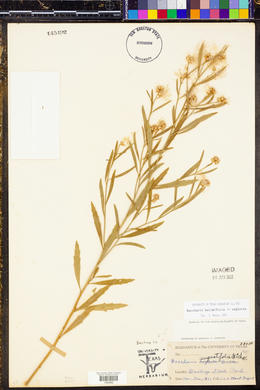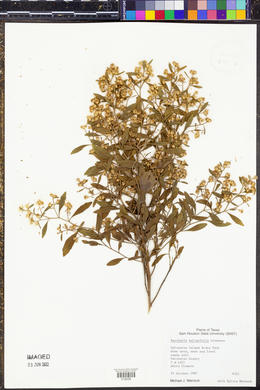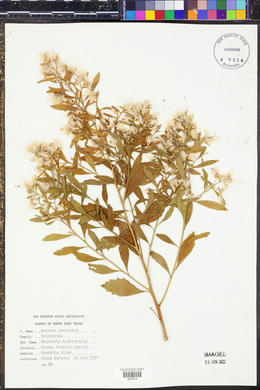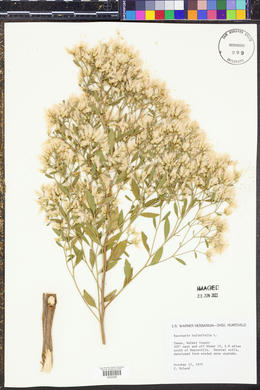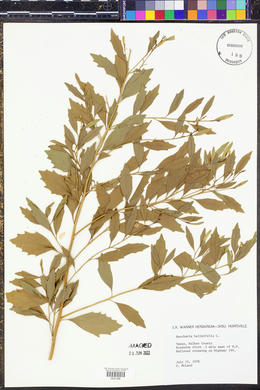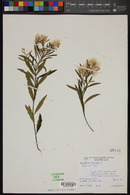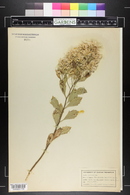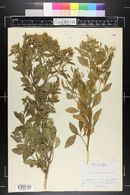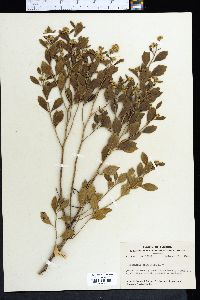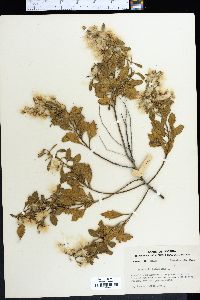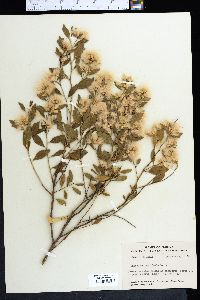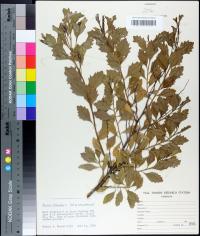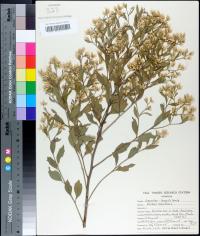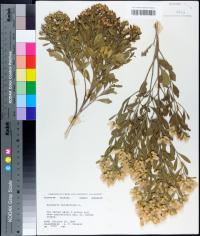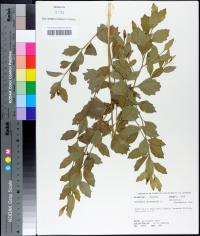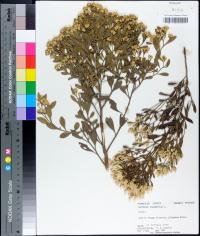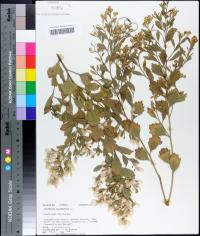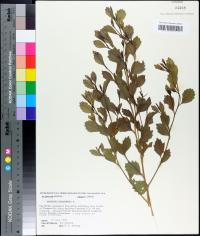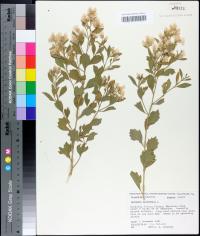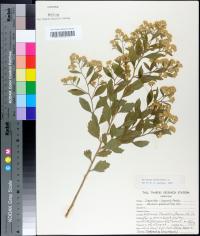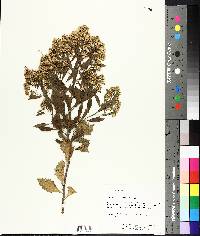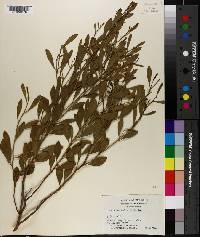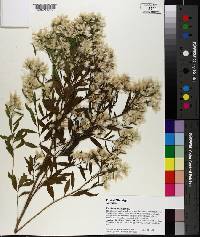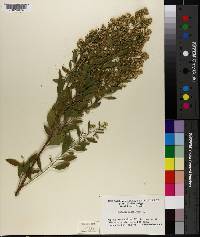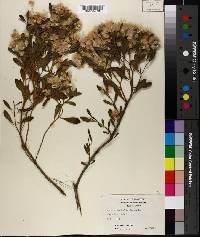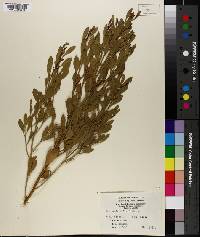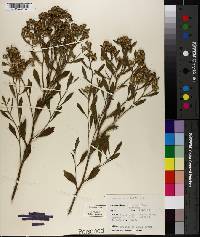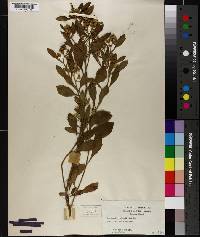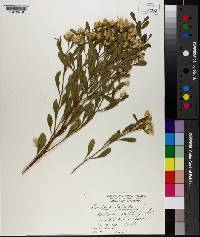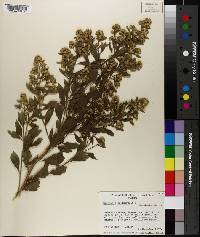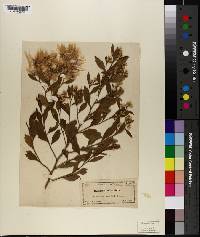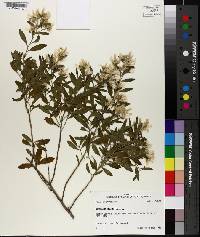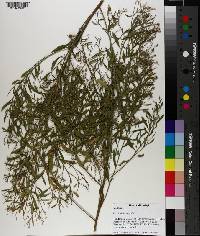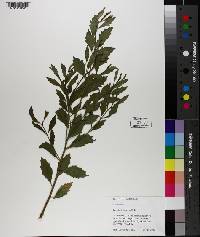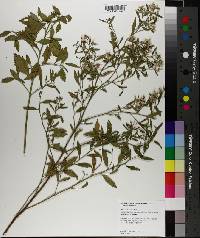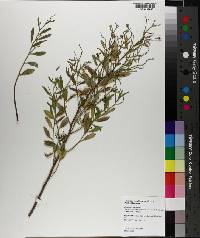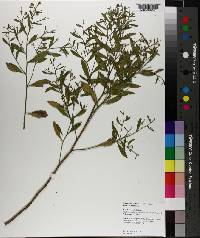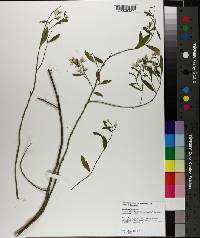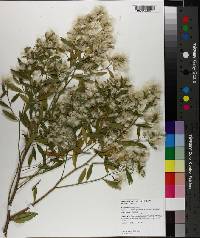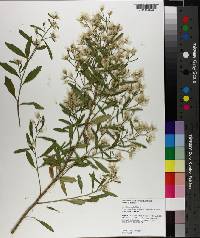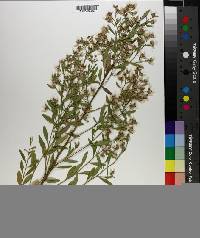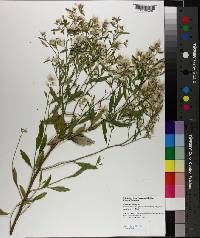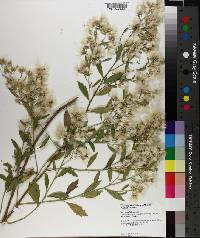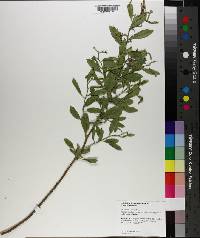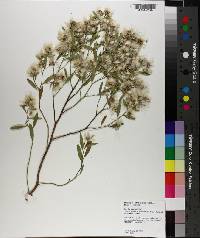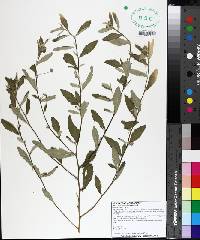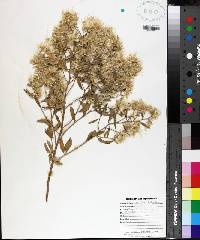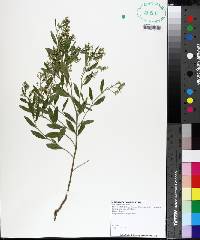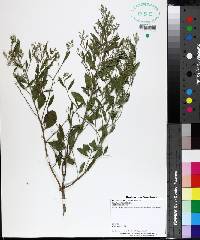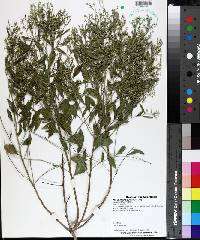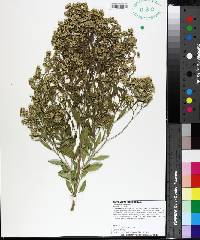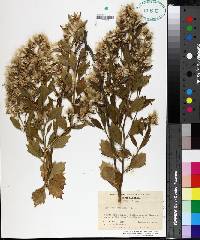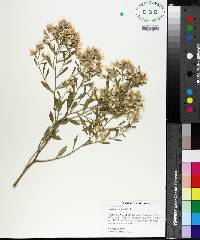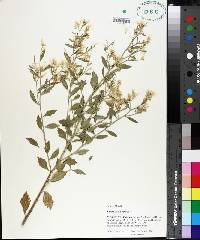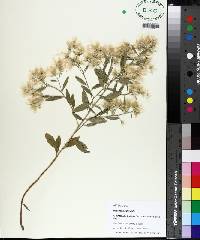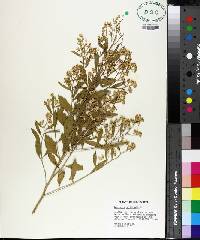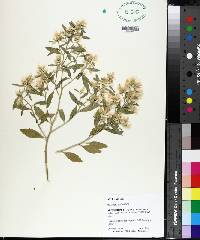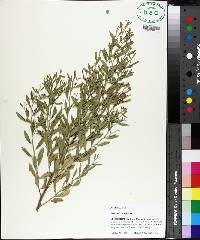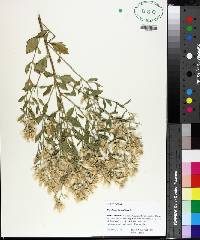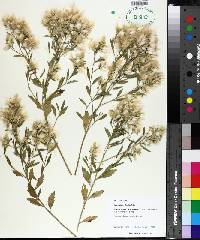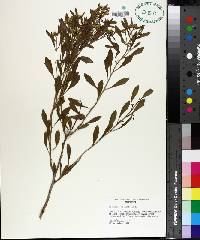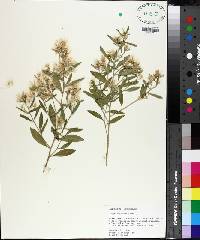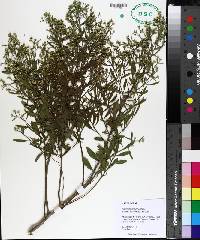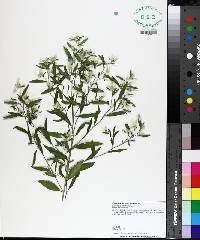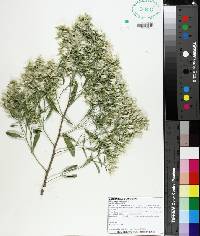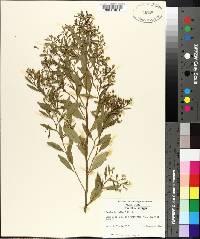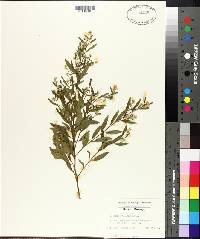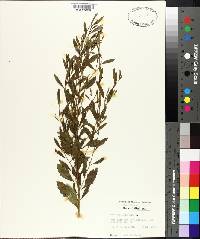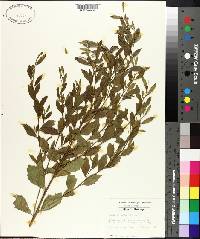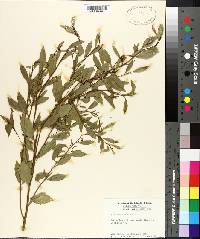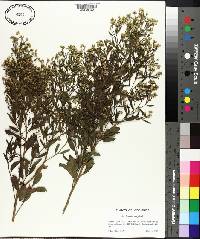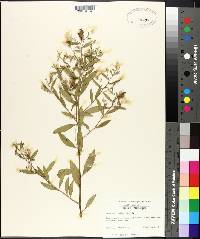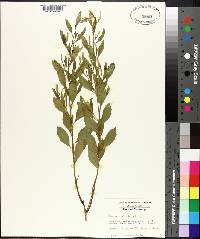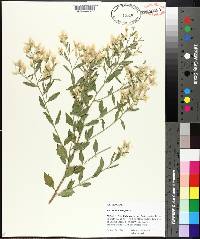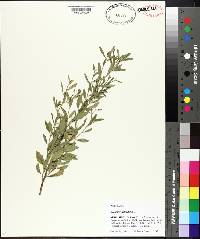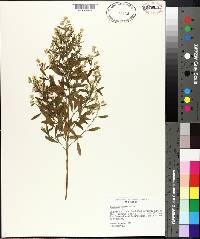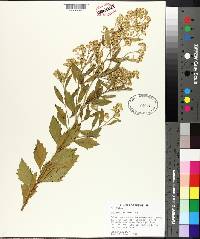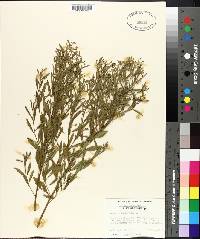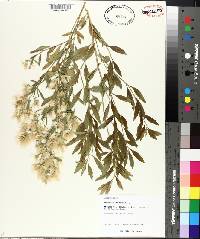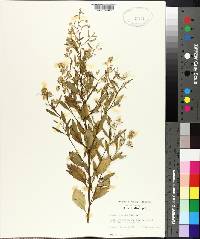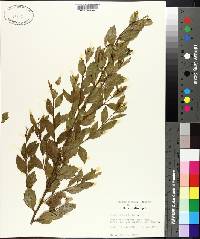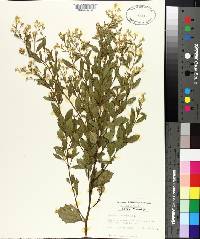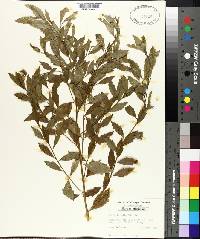Baccharis halimifolia
|
|
|
|
Family: Asteraceae
Groundseltree, more...eastern baccharis
[Baccharis halimifolia var. angustior DC., moreBaccharis halimifolia var. halimifolia] |
Shrubs or trees, 100-300(-600) cm (freely branched). Stems erect to ascending, slender, striate-angled, glabrous or minutely scurfy, sometimes resinous. Leaves present at flowering; short-petiolate or sessile; blades elliptic to broadly obovate or rhombic, main cauline rhombic, 30-50(-80) × 10-40(-60) mm (thick and firm), bases cuneate, margins entire proximally, usually coarsely serrate distal to middles (teeth 1-3 pairs), faces glabrous, gland-dotted, resinous (distal reduced, entire). Heads 3-4 in loose pedunculate clusters in (terminal, leafy-bracted) broad paniculiform arrays. Involucres campanulate; staminate 3-5 mm, pistillate 3-5 mm. Phyllaries ovate to lanceolate, 1-4 mm, margins scarious, medians green, apices obtuse to acute. Staminate florets 25-30; corollas 3-4 mm. Pistillate florets 20-30; corollas 2.5-3.5 mm. Cypselae 1-1.8 mm, 8-10-nerved, glabrous; pappi 8-12 mm. 2n = 18. Flowering Aug-Nov. Open sandy places, wet fields, marshes, beaches, disturbed sites, roadsides, old fields; 0-100 m; N.S.; Ala., Ark., Conn., Del., Fla., Ga., La., Md., Mass., Miss., N.J., N.Y., Okla., Pa., R.I., S.C., Tex., Va.; Mexico (Nuevo León, San Luis Potosí, Tamaulipas, Veracruz); West Indies; introduced in Europe (France), Australia. Native to the Atlantic and Gulf Coastal Plain, Baccharis halimifolia is recognized by its broad, distinctly rhombic, coarsely serrate basal leaves, pyramidal, leafy arrays, and cypselae with large fluffy pappi. The plants are often to 600 cm; the basal leaves might be missed by collectors. Forms with relatively narrow leaves are especially common in Arkansas, Louisiana, and east Texas. These may be the result of hybridization and introgression with B. neglecta, in areas where they are known to hybridize (D. J. Zanowiak 1991), or with B. angustifolia. Hybrids between B. halimifolia and B. angustifolia are known from Florida as well. Baccharis halimifolia has been introduced to Australia and France. In Australia it infests large areas along the coast of southern Queensland and New South Wales. Its success as an invasive weed is attributed to production of a large number of seeds that are widely dispersed by the wind, shade tolerant germination and seedlings, tolerance to wet soils and salinity, and ability to resprout after a fire (W. E. Westman et al. 1975). The leaves of B. halimifolia contain a cardiotoxic glycoside known to cause the death of sheep if they eat about one percent of their body weight in leaves.
Freely branched shrubs 1-3(-4) m, glabrous and somewhat glutinous, the branches and invols sometimes minutely scurfy; lvs short-petiolate, the blade thick and firm, puncticulate, elliptic to broadly obovate, coarsely few-toothed, especially distally, to ca 6 נ4 cm, those of the infl smaller, narrower, and mostly entire; heads numerous in small, pedunculate clusters, forming terminal, leafy-bracteate infls on the major branches; pistillate invols 4-6.5 mm, the bracts strongly imbricate in several series, the inner ones narrow and ±acute; pappus white, that of the pistillate fls much exceeding the cors and invols in fr, that of the sterile heads shorter than the fls and with the bristles somewhat fringed distally; 2n=18. Marshes and beaches, especially near the seashore; Mass. to Fla., Ark., and Tex.; W.I. Aug.-Nov. Gleason, Henry A. & Cronquist, Arthur J. 1991. Manual of vascular plants of northeastern United States and adjacent Canada. lxxv + 910 pp. ©The New York Botanical Garden. All rights reserved. Used by permission. |

